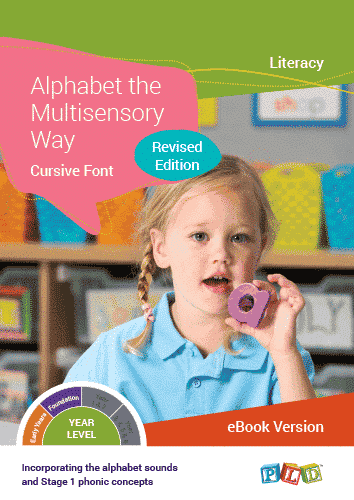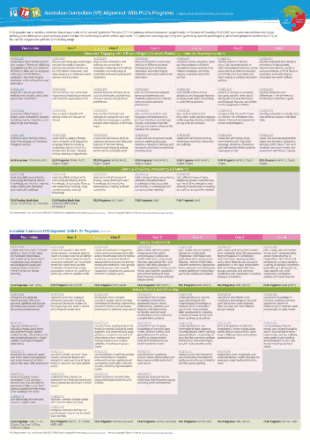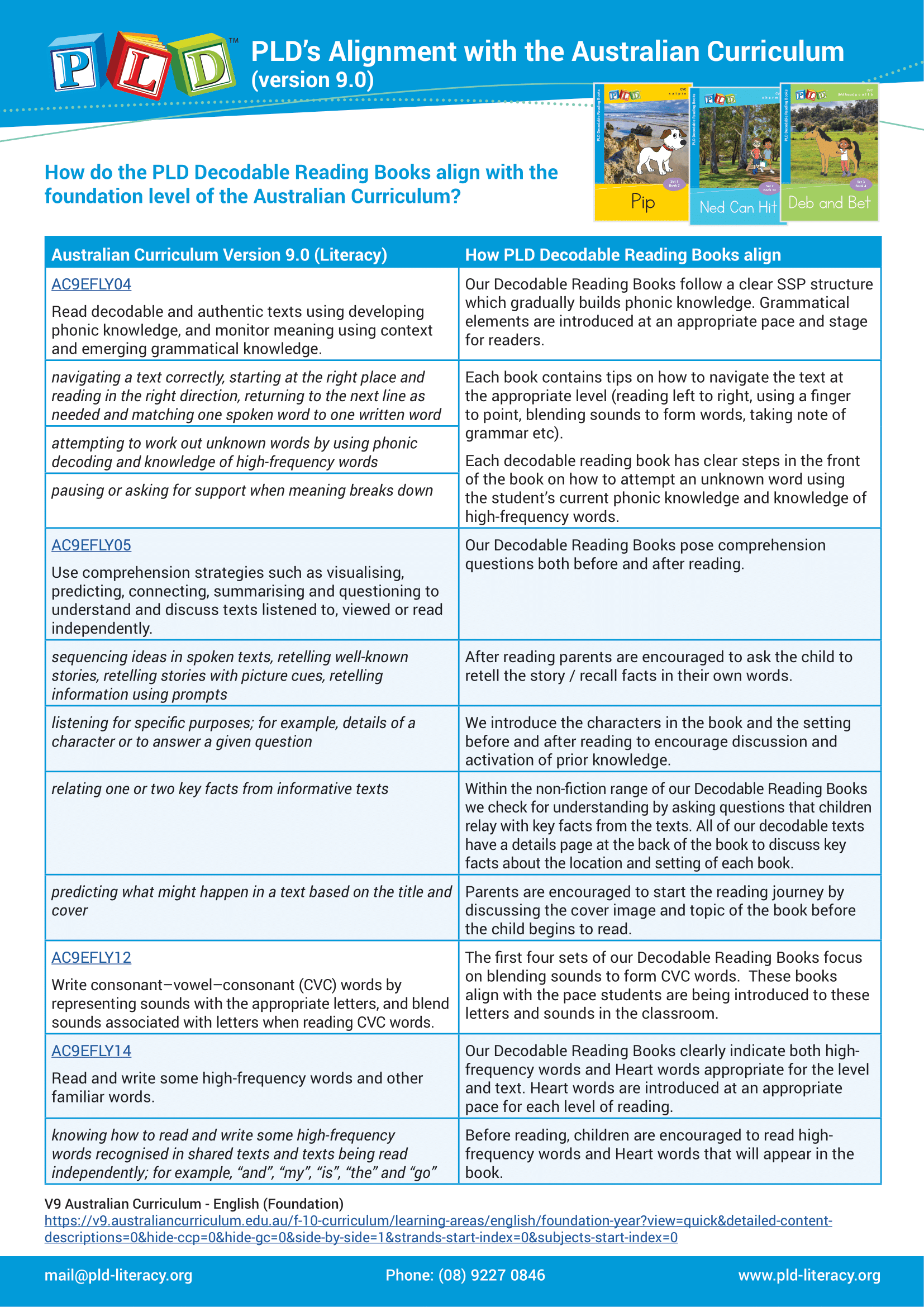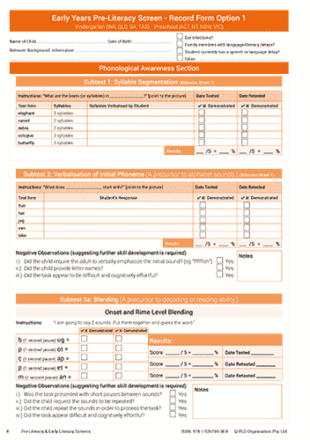-
PLD’s Alignment to the Australian National Curriculum
How does PLD align to the Australian National Curriculum?
In the attached download we have outlined where PLD applies to each year level, the content code and descriptor and the related PLD programs.
-
PLD’s Alignment with the Early Years Learning Framework
-
PLD's Decodable Reading Books Alignment with the Australian Curriculum
Alphabet the Multi Sensory Way – Cursive Font (eBook)
$60.00 (inc. $5.45 GST)
eBooks are solely for use by a single individual user. e.g. An individual classroom teacher. Learn more.
A program for 4-6 year olds, incorporating Stage 1 phonic concepts.
This is a PDF version of the Alphabet the Multi Sensory Way flip book. If you require the print version, click here.
Students require alphabetic and phonic knowledge in order to embark on the process of learning to read, spell and write. However, rather than letter naming ability, sound knowledge is more important for entry into literacy learning.
Not only are alphabet sounds more important for early literacy, but alphabetic sound ability is more difficult for students to acquire. For this reason and designed by Speech Pathologists for teachers and parents, Alphabet the Multi Sensory Way aims to establish strong alphabet and phonic sound ability. Within this program for 4 to 6 year olds, a multi-sensory approach to teaching the alphabetic and phonic sounds has been adopted:
- Students kinaesthetically feel what their mouth is doing when they produce the
alphabet and phonic sounds. - Students see what their mouths look like when their mouths produce the alphabet
and phonic sounds (via the visual representation of the mouth on each page). - Students also visually connect a core picture/word with the alphabet and phonic
sounds (e.g. ‘mix’, ‘teeth’ and ‘snake’). - From an auditory (and phonemic awareness) prospective students identify the
initial sounds in simple target words (e.g. teeth starts with a “t”). - Students move and rehearse a basic action associated with each target picture
(which also engages a kinaesthetic dimension.)
This ebook incorporating Stage 1 phonic concepts features:
- Simple to use format
- Card sets explicitly teach the alphabet and phonic sounds.
- Students feel their mouth making the sounds.
- A body action is outlined for each sound.
- An effective and engaging way to teach the alphabet and phonic sounds.
This publication is mentioned within the ‘Whole School Literacy Strategy’ booklet on pages 5-8.
Copyright: For copyright purposes, every page of the PLD eBooks will be stamped with the name & email address provided by the purchaser at the time of order. PLD ebooks belong solely to the purchaser and may not be shared with colleagues, parents or anyone else. PLD eBooks can not be uploaded to school servers, intranets or online platforms. Schools wishing to licence PLD eBooks can contact us HERE. For full terms and conditions, see our Copyright Terms of Use.
eBooks are solely for use by a single individual user. e.g. An individual classroom teacher. Australian Copyright laws prohibit illegal distribution, storage or sharing of this eBook. Usage is tracked and breaches may result in prosecution. Learn more.
If you would like to provide multiple users with access to this resource we suggest selecting the 'Whole School Access' tab at the top of the screen to purchase a School Licence. Learn more.
eBooks: eBooks will be stamped with the name and email address of the purchaser and may only be used by the authorised purchaser (an individual user) within their classroom. eBooks may NOT be shared with other users or stored on a shared drive/portal/server/LMS. Learn more here.
School Licences: A School Licence allows access to a resource to be shared with an unlimited number of employees who are employed by the ‘Authorised purchaser’. These resources can be accessed by multiple users simultaneously and can be printed (subject to restrictions) or displayed by employees of the ‘Authorised purchaser’ within their classroom. Learn more here.
Downloadable resources & screening tools: These resources can be viewed, downloaded, printed and shared providing the resources are not modified in any way. Learn more here.
Breaches of Australian Copyright Law are taken seriously and may result in legal action being taken. Full copyright information can be found. Learn more here.
ISBN : 9781925769005











